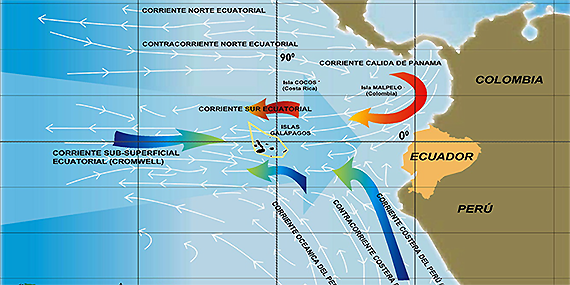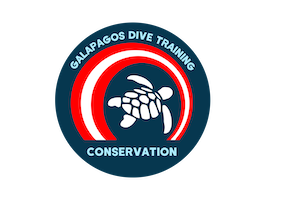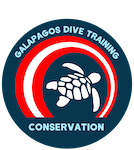VISITING THE GALAPAGOS - Currents, climate, diving and rules!
When to visit and how to respect the local environment

The influence of currents on life in the Galapagos
The Galapagos Islands boast an incredibly diverse marine ecosystem, shaped by the intersection of three significant ocean currents, the influence of equatorial weather patterns, etc.
1 - From June to November, (with August and September being the coldest months), the southern winds predominate, especially in the central and southern islands, bringing with them a cold current that is rich in nutrients (plankton). Known as the Humboldt, after the renowned 18th and 19th century explorer Alexander von Humboldt, this current flows northward from the Antarctic region up past Chile and Peru, before shifting further westwards and merging with the South Equatorial Current, at which point it moves directly toward the Galapagos. Plankton eating migratory species such as whale sharks, and giant manta rays follow this flow in search of food. When these animals arrive with us, they are protected from the illegal fishing practices found outside of the Galapagos Marine Reserve.
2 - From December to May, (with February and March being the warmest and sunniest months), the winds from the south diminish and those from the north, originating in Central America, predominate, bringing with them the so called ‘Panama Current’. This delivers warmer water and migratory species of tropical origin. Fortunately, all life in the archipelago remains active despite this temperature shift, thanks to the deep, cool, upwellings, which helps maintain the Galapagos through the seasons.
3 – Year-round, a 100 m deep flow of water known as the Cromwell (or Pacific Equatorial) Undercurrent, moves from west to east, causing a major upwelling of nutrient rich water along the outlying shores of Fernandina and Isabela, and a fair distribution through some parts of the central islands. This flow is responsible for maintaining a great variety of species within the Galapagos Marine Reserve, especially those that are endemic.
If you embark on a liveaboard trip to Punta Vicente Roca on Isabela’s northwest coast, you’ll experience first-hand the refreshing nature of the Cromwell undercurrent!
Seasonal variations in life around the islands
As a result of the influences set out above, animal and plant life vary seasonally. while every 3 to 7 years it is influenced cyclically, by fluctuations known as El Nino and La Nina. Set out below is a general guide to the key marine animals seen through the year:
Hammerhead Sharks - all year (but more frequent between February and June)
Hammerhead sharks are a highly migratory marine species, they spend most of their time within the Archipelago but also migrate to other seamounts around the Tropical Eastern Pacific in search of food. Females journey to the coasts of Cocos and Malpelo to have their young.
Sea Lions - all year
We have two species. The Galapagos sea lion, which originated in California and is the most common (and characteristic due to its playfulness with divers and snorkelers) and the ‘two-haired’, or ‘fur-bearing’, sea lion. This is a cold-water species that has adapted to conditions in the Galapagos and can be seen most frequently adjacent to cliffs on the west side of the islands.
Reef Sharks - all year
These sharks frequently form groups and can be seen in large numbers when at rest in areas with a sandy bottom.
Golden Rays - all year (but more frequent between January and June)
Sometimes seen individually but often in large groups, frequently associating with other species of ray.
Eagle Rays - all year (but more frequent between January and June)
Eagle rays can be observed in almost all our ecosystems, frequently in groups of 30-40 individuals.
Green Sea Turtles - all year
The green sea turtle nests in the Archipelago and we have a significant population, but it is not the only one that can be observed here, as the hawksbill, loggerhead, and leatherback are all occasionally sighted.
Marine Iguanas - all year
The only iguana in the world to adapt to feeding underwater, these reptiles are dependent upon the temperature of their environment to be able to metabolize. In the relatively cold waters around the archipelago, this means the best time to observe them eating is around midday, when the sun is as its zenith.
Manta Rays - most prolific between July and November
This species feeds on plankton brought by the Humboldt current each year and is most abundant when it is flowing strongly. However, mantas can be observed around Isabela throughout the year due to local cold water upwellings.
Mola mola - generally, August to December/January
Although seen across the central Islands during their season, the most reliable sightings, throughout the year, are at Punta Vicente Roca in Isabela.
Whale Sharks - generally, July to November
Best seen at Wolf & Darwin, during the months the Humboldt Current predominates, they can occasionally also be observed in the warm season.
Note - During significant El Nino and La Nina cycles some species increase in number, while other decrease, as sea surface temperatures, nutrients in the water, rainfall, sea level, and wave action, undergo fluctuation.
Local climate and dive conditions
The islands experience a subtropical climate, characterized by two primary seasons:
A warm season between January and May
During this time, the southeast winds diminish, allowing warmer waters from the Panama Basin to flow in. The skies become clearer, and temperatures rise, creating a distinctly tropical atmosphere, often accompanied by occasional heavy rains.
Average temperature: 27°-32° C (80°-90°F), with periodic rainfall. This is an ideal time for visitors seeking sunshine and warmer, calmer seas.
A cool season between June and September
Locally referred to as the Garùa or, misty, season, this period is marked by cooler air, frequent fog, and choppy seas, these features all influenced by the Humboldt Current and southeast trade winds. Rainfall at this time is minimal, typically not exceeding 10 mm per month.
Average temperature: 15°-21° C (60°-70° F), with misty mornings. This season is great for those interested in observing increased underwater wildlife activity.
In addition to the above, we have a short dry season between October and December
Average temperature: 21°-27° C (70°-80°F). This is a favourable time for visitors looking for mild weather, perfect for both land and underwater adventures.
Sea Temperatures (Average)
• January – June: average 21°-27°C (70°-80°F)
• July – December: average 18°-23°C (65°-75°F)
During the warmer months, we offer 3 to 5 mm wetsuits while in the colder months, we supply 5 to 7mm wetsuits and accessories like hoods, to ensure that you stay warm and comfortable. If you’re not accustomed to chilly waters or tend to feel the cold more than others, you’re welcome to bring an additional base layer, although we do have such extras available.
For snorkelling, we suggest a dive skin when the weather is warm and a 3mm wetsuit in the cooler months. You can either rent these locally or bring your own.
Visibility
Visibility in the Galapagos generally ranges between 8 and 10m (25ft to 35ft) with an increase to some 18m (60ft) on good days. If you’re used to gin-like conditions, don’t worry, Galapagos wildlife is both copious and curious - you’ll find yourself diving close to the animals and not worrying about the vis!
The rules governing National Park access
1 - Do not take food to the islands (especially organic products)
2 - Clean the soles of your shoes before disembarking onto a new island. You may be carrying seeds endemic to one island that should not be introduced to another.
3 - Always follow your guide/ marked trails
4 - Do not touch animals
5 - Do not take souvenirs (rocks/shells, etc)
6 - Do not get too close to animals (especially new-born animals and juveniles). The rule is generally. keep 2 m distance.
7 - Do not drop/leave litter
8 - Do not smoke in the National Park
9 - Always stay with your group.
While some of these directions might seem excessive, following them is the only way to protect our unique archipelago for future generations, so do please respect the restrictions placed upon you.
See also in this section:

